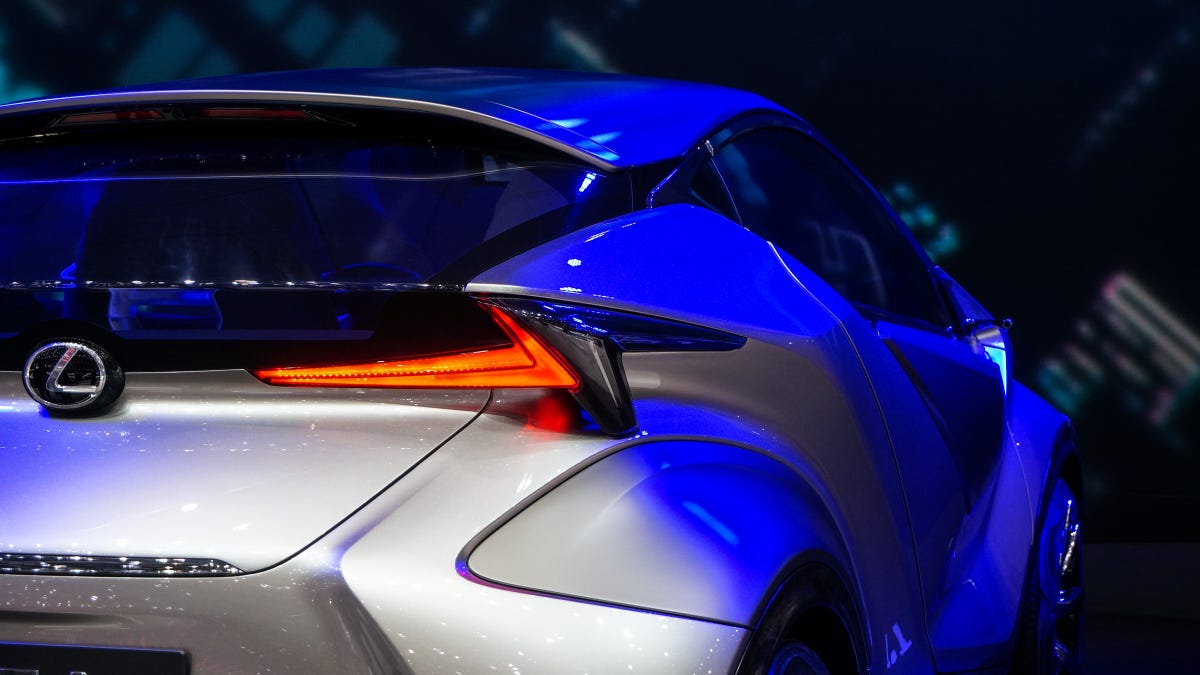LF-SA concept is a little Lexus for urban adventurers (pictures)
This little concept has the grille of a car twice its size! At the 2015 Geneva auto show, Lexus tries out its SUV design language on a compact city car

Lexus LF-SA concept
GENEVA -- The latest Lexus concept combines the angular styling of the automaker's latest crossovers with the compact proportions of a city car.
Lexus LF-SA concept
At about 3.45 meters from nose to tail, the LF-SA concept is significantly shorter than the Toyota Yaris. It's a little fella.
Lexus LF-SA concept
Small in stature, the LF-SA is (for better or worse) big on style. Just look at the size of that spindle grille!
Lexus LF-SA concept
The concept pushes the wheels to the very corners of the car, to maximize stance without a large footprint.
Lexus LF-SA concept
Further emphasizing the wheels are deep undercuts above the wheel arches. These recessed areas make the concept look even wider and lower than it actually is.
Lexus LF-SA concept
The undercut theme continues onto the rear hatch with the backlight featuring a sharp crease.
Lexus LF-SA concept
Each wheel is large, but spokes that protrude beyond the rim and integrate into the tire's design make the LF-SA's rollers look even larger.
Lexus LF-SA concept
Compact headlamps feature LED illumination and overlap slightly with the automaker's trademark L-shaped DRLs.
Lexus LF-SA concept
The spindle grille features a three-dimensional texture that radiates out from the "L" badge.
Lexus LF-SA concept
Lexus didn't mention what's under the skin, but based on the proportions, the LF-SA appears to be a front-wheel drive gasoline or hybrid vehicle.
Lexus LF-SA concept
Tail lights normally sit flush with the vehicle, but the LF-SA's extend subtly. Look closely and you can see how the housings seem to float away from the rest of the car.
Lexus LF-SA concept
The fog lights, which are normally prominently displayed, go the opposite direction and are tucked into small intakes on the bumper.
Lexus LF-SA concept
The concept uses cameras in place of its side and rear mirrors. Live displays on the dashboard and above the windshield give a live view of what's behind you.
Lexus LF-SA concept
LF-SA is short for Lexus Future Small Adventurer. The compact car is designed for urban environments.
Lexus LF-SA concept
Designated a 2+2, I'm not sure that any adult would want to fold up into the LF-SA's nearly nonexistent second row.
Lexus LF-SA concept
The wheel arches and doorsill trim isn't simply black, but features a subtle organic pattern not unlike mud splashes or stone.
Lexus LF-SA concept
Like the Toyota/Scion iQ, the LF-SA has an asymmetrical seating configuration that allows the front passenger to slide ahead of the driver to give legroom to the second row, or behind to regain more for him or herself.
Lexus LF-SA concept
The driver's seat is bolted and fixed in place, rather than sliding fore and aft on rails like in a normal car.
Lexus LF-SA concept
To adjust, the driver is able to move the steering wheel and pedal box back and forth along a motorized path. Instead of going to the controls, the controls come to the driver.
Lexus LF-SA concept
Normal vehicles have pedal linkages and steering racks that limit their adjustment ranges. However, this could change as more automakers adopt drive-by-wire and steer-by-wire setups.
Lexus LF-SA concept
Lexus says that, while the compact LF-SA is in theory large enough to accommodate up to four passengers, the concept was designed under the assumption that most urban drivers are alone in the car for most trips.

